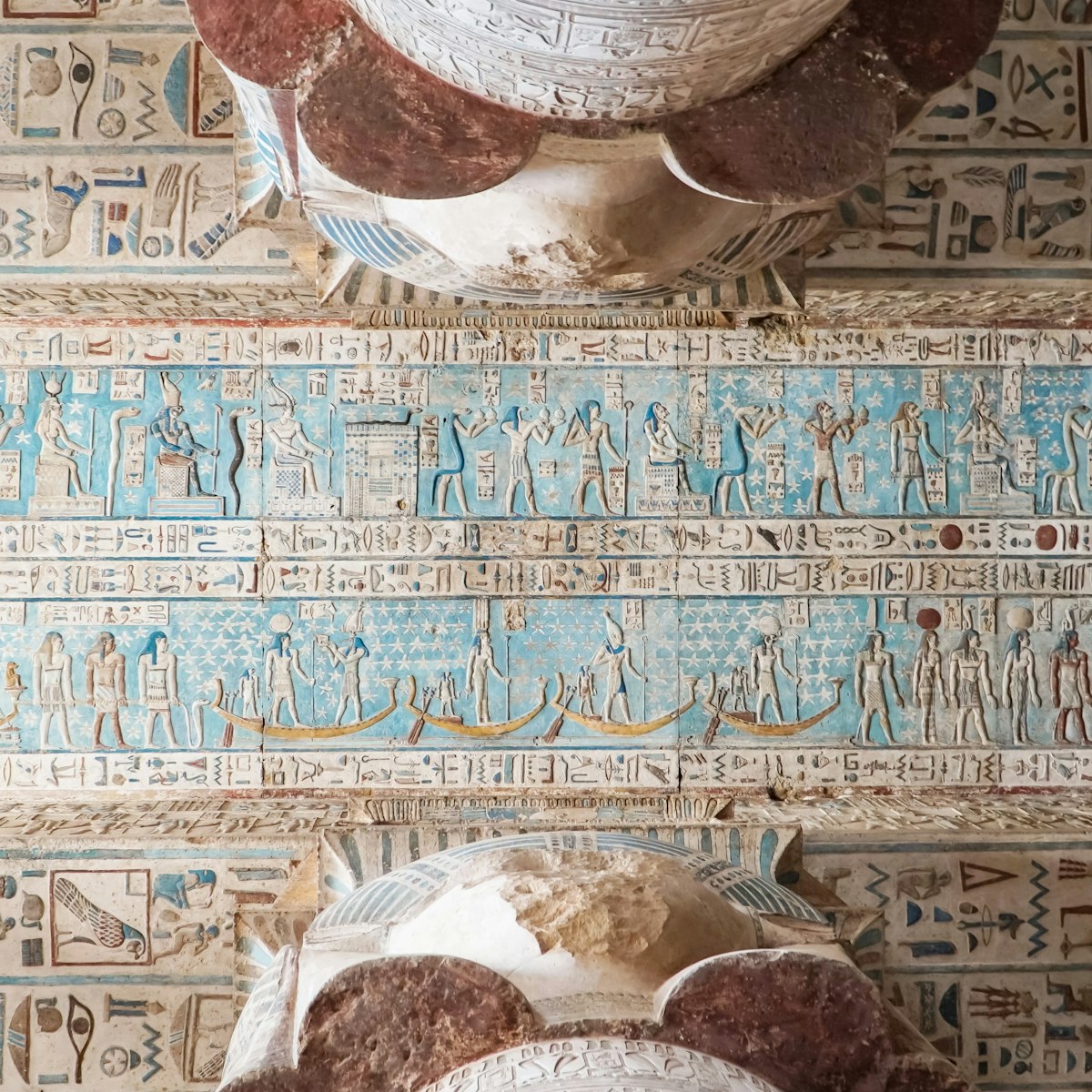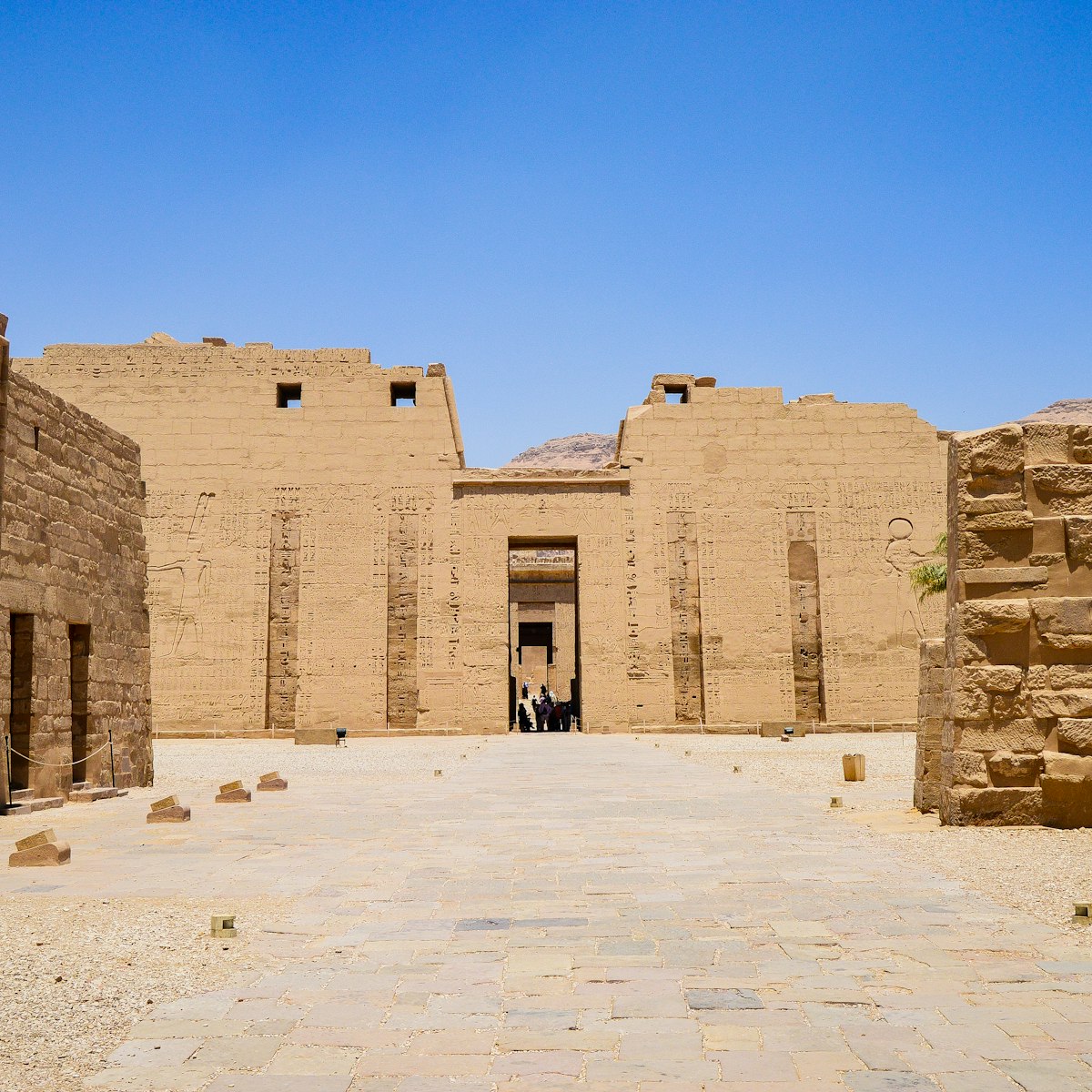The second-largest tomb in the valley, Merenptah’s tomb has been open since antiquity and has its share of Greek and Coptic graffiti. Floods have damaged the lower part of the walls of the long tunnel-like tomb, but the upper parts have well-preserved reliefs. The corridors are decorated with the Book of the Dead, the Book of Gates and the Book of Amduat. Beyond a shaft is a false burial chamber with two pillars decorated with the Book of Gates.
Ramses II lived for so long that 12 of his sons died before he did, so it was finally his 13th son, Merenptah (1213–1203 BC), who succeeded him in his 60s. The pharaoh was originally buried inside four stone sarcophagi: three of granite (the lid of the second is still in situ, with an effigy of Merenptah on top), and the fourth and innermost of alabaster. In a rare mistake by ancient Egyptian engineers, the outer sarcophagus did not fit through the tomb entrance and its gates had to be hacked away. Much of the decoration in the burial chamber has faded, but it remains an impressive room, with a sunken floor and brick niches on the front and rear walls.







